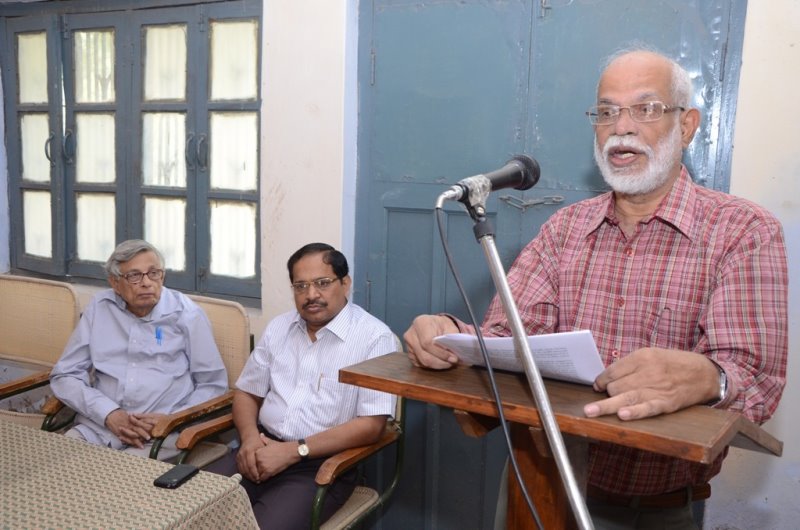Prof. Kesavan Veluthat

Prof. Kesavan Veluthat
Early Medieval India
One of the elements which nationalism draws sustenance from is a particular construction of history. During the anti-imperialist struggles in India in the first half of the 20th century, creation of golden ages in our past would have served to boost the morale of the educated middle classes.
In the Gupta empire were identified all the elements with which golden ages are made by historians.
Among them were mentioned an all-round development in the political, cultural and economic fields. The Guptas were shown to have repulsed "foreign" invaders such as the Hunas. In the field of the arts, developments in painting and sculpture were projected. Literary achievements were also underlined with Kalidasa being the best example.
What was identified as Hinduism was shown to have reached its height with the Puranas representing its highest glory. Gold coins and other indicators of economic prosperity were also taken up. However, ever since Kosambi, questions have been raised about the quality of this golden age, much of which is as Professor Thapar says, shown as more tinsel.
As for the revival of nationalism under the Guptas, it has been shown in recent years that the only positive evidence of any direct engagement which the Guptas had with the Hunas comes from the fragmentary play, Devichandraguptam, where Ramagupta is shown to have been defeated by them and also nearly surrendered his queen Dhruvadevi to them!
The Vamsanucharita sections of the Puranas, the other contemporary literary source of the period, speak of the Guptas as comparable to the mlecchas and unrighteous. It is only in the exaggerated claims in their own inscriptions that they are described as great, which were used by nationalist historians.
Thus, Kosambi says, rather than the Guptas reviving Indian nationalism, Indian nationalism revived the Guptas! In the matter of cultural achievements shown as part of the "Hindu renaissance" there has also been considerable rethinking. The sculptures and paintings bearing the Gupta stamp, from Mathura, Ajanta and Bagh, are mostly Buddhist and not related to Hindu themes.
Even in literature, Kalidasa is shown as carrying forward a tradition dating from a much earlier period, not to speak of the doubts raised about his date. Even about the happy position enjoyed by the brahmanical sections of society, there have been notes of dissent.
So also, in the matter of economic prosperity, the age of the Guptas and immediately thereafter is shown as witnessing the creation of several shades of superior rights over and the subjection and immobility of peasantry. Women were subjected to increasing hardships, instances of sati went up. In fact, women and sudras come to be bracketed together in the texts.
On the whole, therefore the idea that the age of the Guptas represented a Golden Age does not hold much water any more.
When this demystification of the watershed of the early medieval period has been effected, a straighter thinking is possible about this and the subsequent periods. There is no particular glory attached to the "Hindu" period and, therefore, no more degeneration and decay attributed to the later, "Muslim" period. Communal historiography loses one of its sharpest teeth.
— Prof. Kesavan Veluthat
Mangalore University
In 1997, Khoj education for a plural India programme held a workshop that enabled interaction between in India's leading historians and school teachers in Mumbai. This article is the edited transcript of the lecture by professor Kesavan Veluthat.
Archived from Communalism Combat, March 1997 – Cover Story